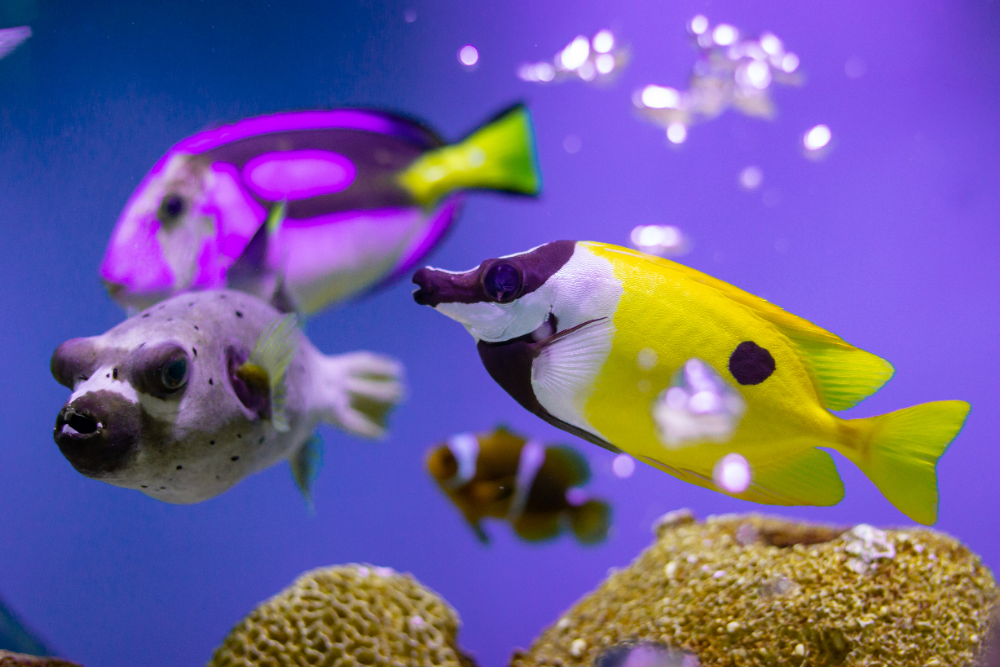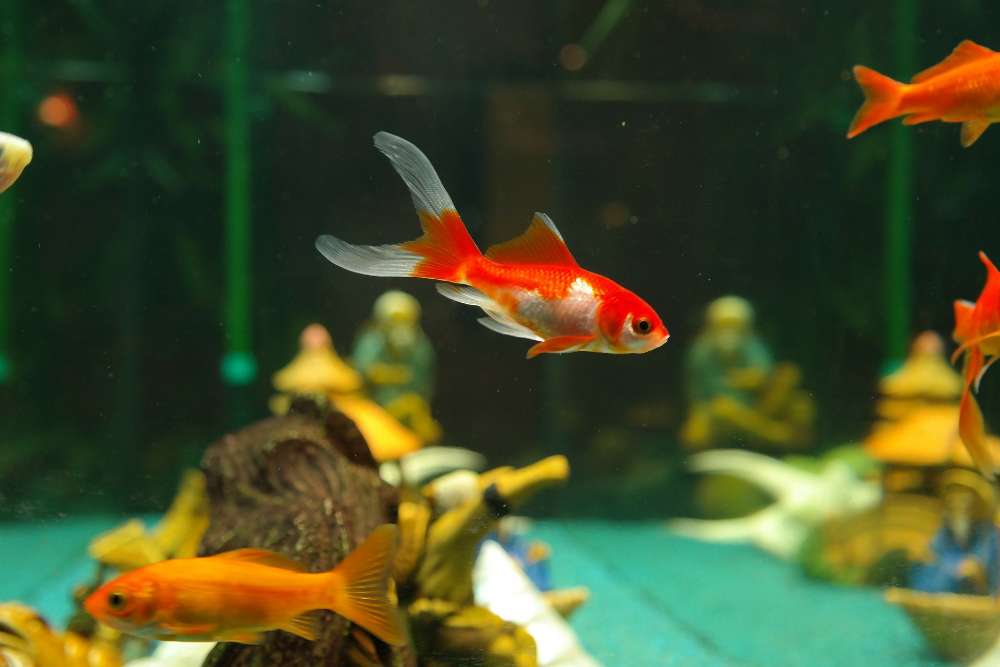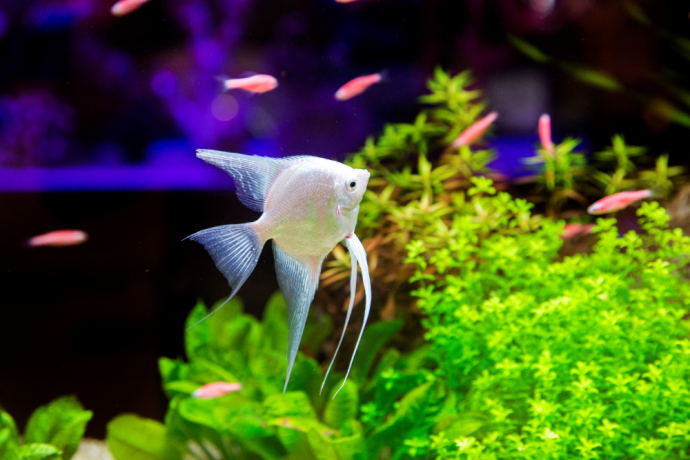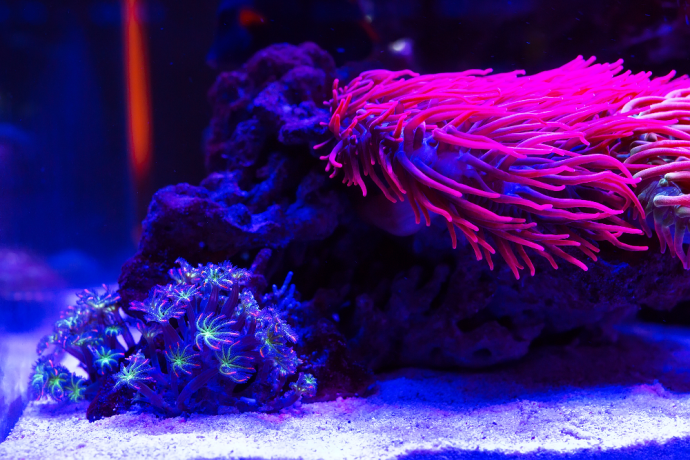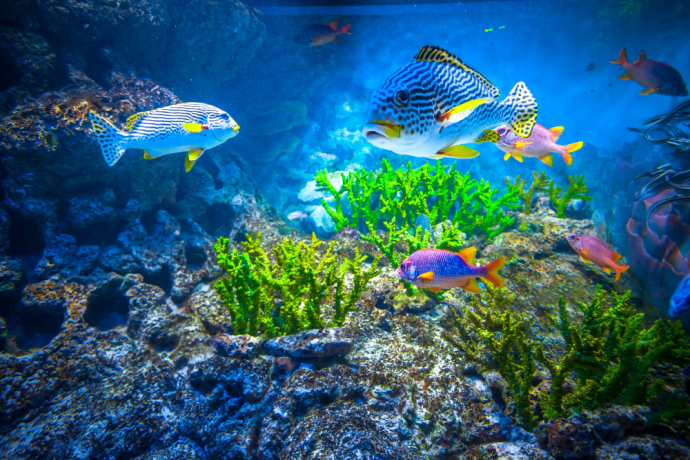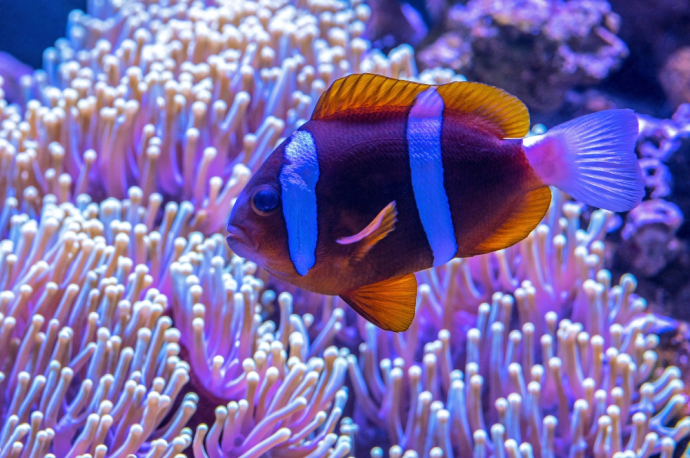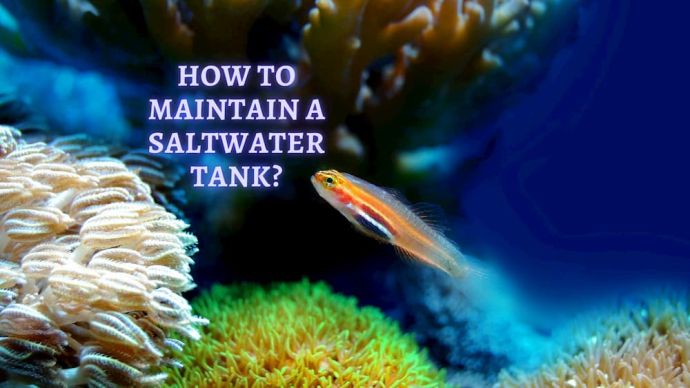How to Reduce Phosphates in a Saltwater Aquarium
Written by:
Author: Vicki Smirnova
Vicki Smirnova is a professional writer and editor who adores animals and helps readers get along well with their pets. She has been working in digital media for more than 5 years and has great experience writing content about lifestyle, including pets. Vicki specializes in dog health and nutrition, cat feeding, dog training. She is an aquarium lover and is passionate to write about fish care at home. Also, Vicki headed several websites and worked as a news editor.
View all 245 articlesLearn about our editorial process and veterinary review board.
Viewed: 349
Updated on: 03/10/2021
Phosphates are inorganic salts of orthophosphoric acids that are obtained from natural minerals. These salts often used as fertilizers in agriculture. Phosphates are stable chemical compounds of phosphorus. Phosphorus is beneficial for all living organisms; it participates in cellular metabolism and serves as a source of energy.
Phosphates, as well as nitrates, are very actively absorbed by living plants. The problem is that they are loved not only by plants but also by algae. And if there are a lot of phosphates, plants stop coping with them and algae take over. The water and walls turn green, the oxygen level drops, and this indirectly affects the fish’s health. And as we know, algae are sometimes tough to fight. Therefore, it is better to keep the norms of inorganic salts of orthophosphoric acids within acceptable limits – close to zero.
Fortunately, there are several effective measures to keep the concentration of phosphate within acceptable limits. In this article, we will consider methods for monitoring the phosphate level and fair values for the aquarium concentration of phosphate.
Why are Phosphates Dangerous?
Phosphates are essential nutrients for plants and animals. They are necessary for all organisms, so they are usually considered safe and allowed for food and feed use.
However, excessively high levels of inorganic salts of orthophosphoric acids in water can cause serious environmental problems. In reservoirs where there is no water flow, in particular, the content of nutrients may increase, and as a result, the lake begins to bloom. After these algae die off, oxygen production drops. This can disrupt the process of aerobic decomposition and even cause the death of the reservoir’s flora and fauna.
In aquariums, there is no such flowering, but high levels of inorganic salts of orthophosphoric acids can stop plants’ growth and lead to an increase in the number of algae. Algae not only spoil the appearance but also release toxic substances into the water; for example, in the case of blue-green algae (cyanobacteria). Therefore, it is necessary to avoid elevated levels of salts of phosphoric acids in the aquarium.
Besides, in a marine aquarium with corals, inorganic salts of orthophosphoric acids inhibit (slow down, suppress) calcification.
How to form the Phosphate?
There are many sources of inorganic salts of orthophosphoric acids in the aquarium:
1. Tap water
Phosphates can get into the aquarium with water. For example, inorganic salts of orthophosphoric acids are sometimes added to tap water to protect the pipes, or demineralization systems may use phosphate salts for regeneration purposes, leaving phosphates in tap water. Even when using rainwater, salts of phosphoric acids can get into the aquarium.
2. Accumulation of phosphates in the aquarium
The aquarium is a closed ecosystem. Organic nitrogen and phosphorous substances in the aquarium, such as fish residues, feed residuesь, and dead plants, dead fish and fish slime, break down and form nitrates and inorganic salts of orthophosphoric acids. These are essential nutrients for plants. If the intake of nutrients is less than the amount in the aquarium, the nutrients will accumulate.
Also, the source can be a means for stabilizing water parameters. Phosphates accumulate in the aquarium to a greater or lesser extent. It depends on the population of fish and the number of plants.
Norm of Phosphates in Saltwater
In the world’s oceans, the concentration of orthophosphate varies significantly. It depends on the region and depending on the time of day and depth of water. Surface waters are considerably weaker for orthophosphates than deep-water areas, and this is due to the biological activity of organisms that consume phosphorus.
The ideal level in a marine aquarium is 0.02 ppm or less. As the level rises, algae begin to develop, especially in aquariums without live plants.
How to determine the level of Phosphates in a Saltwater Aquarium
If you want to determine inorganic salts of orthophosphoric acids in the aquarium, it is necessary to use drop tests. The procedure is quite simple. You need to mix a unique solution with aquarium water and compare the resulting color with the table from the instructions.
However, there are several nuances. First, as mentioned above, tap water may already contain some amount. Second, tests show only inorganic salts of orthophosphoric acids dissolved in water. But they will not reveal the presence of phosphates that have settled in the ground and phosphates of organic origin. If according to tests, you have no inorganic salts of orthophosphoric acids in the aquarium, it does not mean that they are not there.
Always check the production date and expiration date of any aquarium tests. After all, for example, in reputable laboratories, the composition of the test is prepared on the day of measurement, and the next day it is not trusted. Therefore, the expiration date is significant for the accuracy of measurements.
How to reduce the level of Phosphates?
Now that it is clear where the phosphate comes from, and what effect it has, let’s look at where this element is spent and how to maximize its reduction processes.
Optimal ways to reduce phosphate levels:
- Changing the water in the aquarium. Freshwater mustn’t contain salts of phosphoric acids. Regular replacement of water is always recommended to maintain a healthy aquarium system. This helps control phosphates, nitrates, and many other undesirable chemical elements and compounds in saltwater. Since phosphates can precipitate, it is also necessary to clean the soil, glass, and decorative elements to reduce them.
- Use of specialized products. There are now on the market of aquarium products many products for reducing salts of phosphoric acids in water. These products not only reduce it but also prevent the development of algae. You can use commercially available phosphate removal products such as Sea Chem’s phosphate Guard, Kent Marine’s Phosphate Sponge and Coralife.
- Removal of phosphate by macroalgae. Growing macroalgae can be a very effective way to reduce phosphate levels in a reef aquarium. Aquariums with a large number of thriving macroalgae do not face problems of excessive microalgae growth or excessive phosphate content, which could inhibit skeletal formation in corals. If fast-growing macroalgae, and as a result, consume enough phosphorus, resulting in a minimal amount of orthophosphate in the water, while at the same time do not allow microalgae to develop – then most aquarists will be happy!
- The excretion of phosphate by the bacteria. The growth of the bacterial population can be stimulated by adding carbon sources to the water; for example, sugar, acetic acid (vinegar), and ethanol (ethyl alcohol, vodka). Bacteria consume additional carbon sources, converting them into energy. In the process of growth and reproduction, bacteria necessarily consume nitrogen and phosphorus from water. This method has one drawback – in the process of life, bacteria also consume oxygen.
- Using a skimmer is another very effective way to reduce phosphate levels. It removes not only organic forms of phosphate, thereby reducing the risk of its splitting to inorganic forms, but also removes other substances and improves gas exchange – the importance of gas exchange is underestimated by many aquarists. However, it is a primary factor in maintaining pH.
READ MORE: How to Clean dirty Fish Tank
Phosphates in the aquarium, while not as dangerous as ammonia or nitrites, are still better to keep at the lowest possible level.
The exception is aquariums with a lot of plants and a small number of fish. For such aquariums, inorganic salts of orthophosphoric acids may not be enough, and they have to be added, using specialized tools and fertilizers.
The accumulation of salts of phosphoric acids and subsequent growth of algae can be one of the most difficult to solve in a reef aquarium, especially if live rocks and sand have been exposed to high concentrations of phosphate.
RAED MORE: Best LED Lighting for Reef Tanks
Fortunately, there are several preventive measures, including reducing the concentration of phosphate, which will improve the aquarium’s condition, even if the aquarium does not suffer from excessive growth of algae.
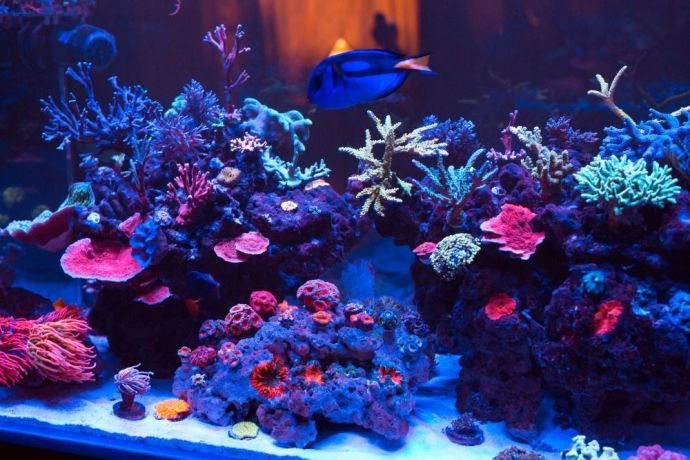 Fish Owners Tips Saltwater Refugiums: How to Make a Refugium for Saltwater Aquarium?
Fish Owners Tips Saltwater Refugiums: How to Make a Refugium for Saltwater Aquarium? - 735
- 0









